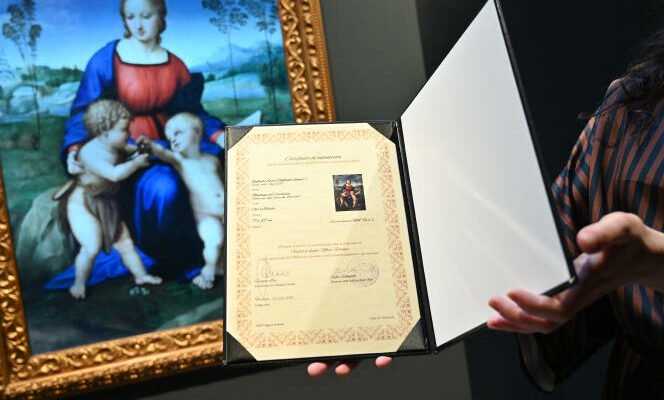Nothing resists the call of NFTs (or “non-fungible tokens”, in French), these digital titles of ownership referring to images recorded in the blockchain. After the world of art, luxury and sport, it is the turn of museums to step into the breach. The British Museum in London is putting up for sale until March 4 twenty NFTs representing watercolors by the British painter William Turner. Reproductions, like the Internet is full of, but which play on the scarcity effect. The qualified editions of “super rare” by the museum are priced at 4,999 euros. As for the less “rare” ones, they all found takers in less than a month at a unit price of 999 euros.
The London museum is not at its first attempt. Already in September, he had sold two hundred Hokusai NFTs for an amount “seven digits”, says Jean-Sébastien Beaucamps, founder of LaCollection, a start-up specializing in the sale of this technology and partner in the operation. The spin-offs do not compensate for the drop in ticketing revenue. But they are not negligible for a beleaguered museum, whose revenues have shrunk by 97% between 2020 and March 2021. “Beyond the check, the operation gave the British Museum access to a whole generation of new collectors who could become as many donors”, argues Nicolas Reynaud, partner at LaCollection.
“The museum is depreciating by wanting to persuade us that an infinitely reproducible JPEG deserves to be exchanged like limited-edition pieces,” says art historian Bendor Grosvenor
It was in January 2021, as the waves of Covid-19 followed one another, that Mr. Beaucamps had the idea of launching LaCollection. “I saw that American museums were reduced to selling works to pay their employees, and at the same time, the art market seemed stronger than ever”, rewinds the young entrepreneur, who then proposes to a hundred museums to engulf themselves in the NFT phenomenon.
At the same time, other companies are smelling the potential. In May 2021, the Uffizi gallery in Florence joined forces with the Italian company Cinello to reproduce in NFT a painting by Michelangelo, for which it collected 140,000 euros. The Hermitage, in Saint Petersburg, is following suit by launching five NFTs during the summer of 2021, reproducing paintings by Leonardo da Vinci, Van Gogh and Monet, which bring in more than 440,000 dollars (nearly 388,000 euro).
“Legal uncertainty”
The Belvedere, in Vienna, has also just taken the fold. On the occasion of Valentine’s Day, the Austrian museum has put up for sale 10,000 NFTs of the famous Kiss, by Klimt, at 1,850 euros each. Sold as “digital lithographs”, these reproductions offer no more interest than vulgar posters, in the eyes of art historians. “The museum depreciates trying to persuade us that an infinitely reproducible JPEG deserves to be traded like limited-edition pieces,” thus creaks the art historian Bendor Grosvenor in theArt Newspaper.
You have 39.4% of this article left to read. The following is for subscribers only.
